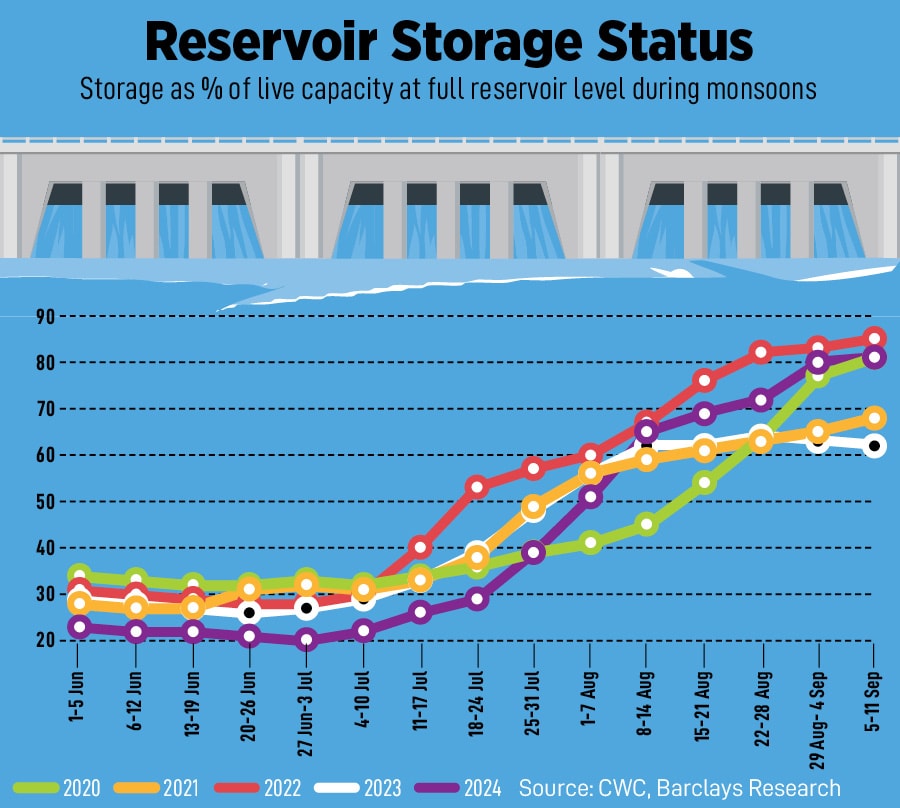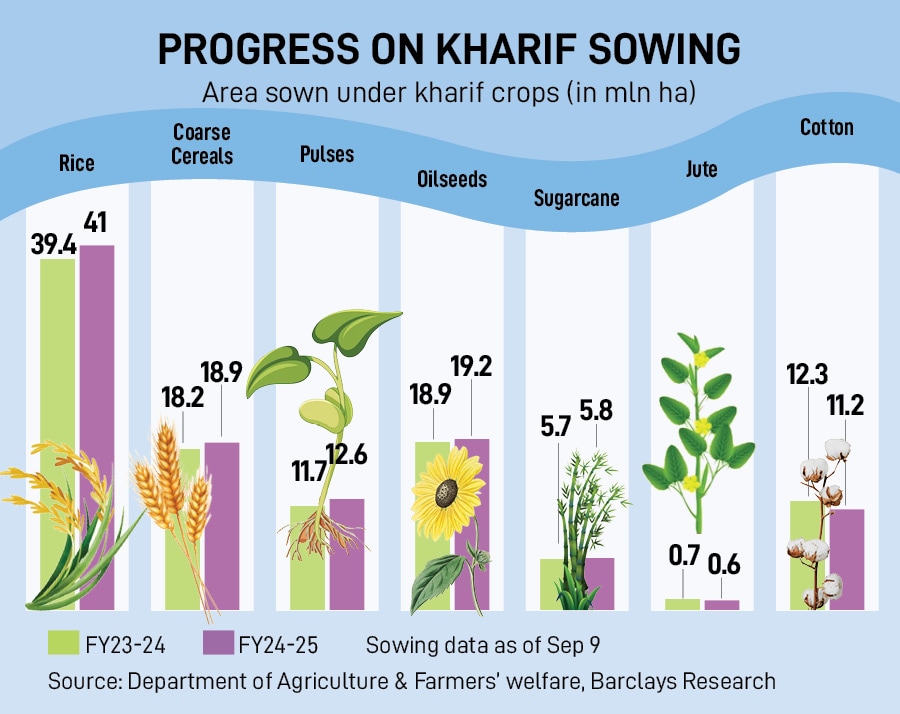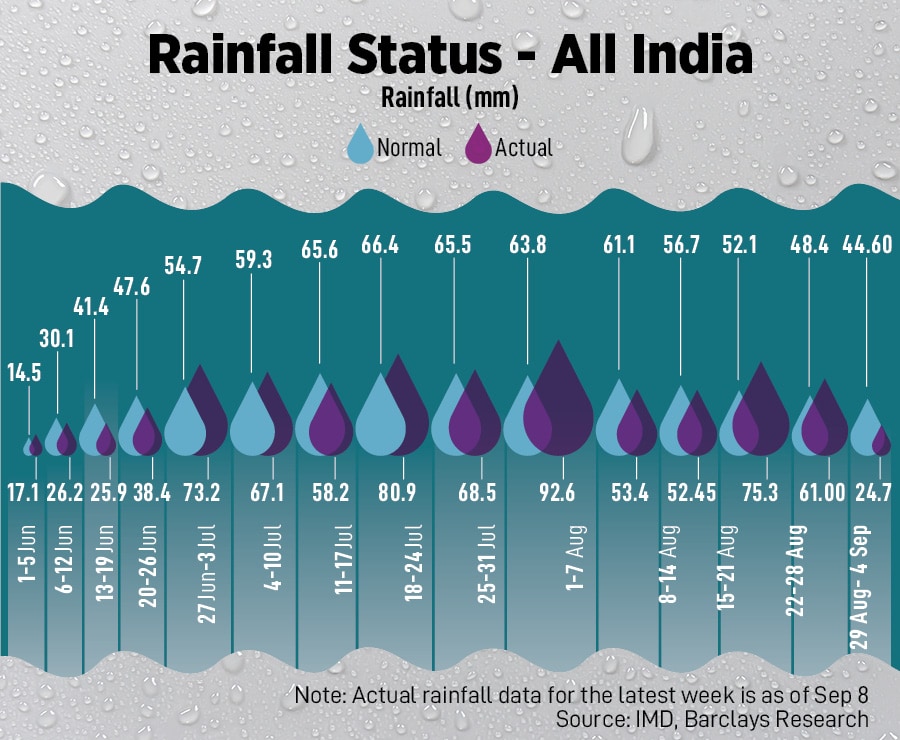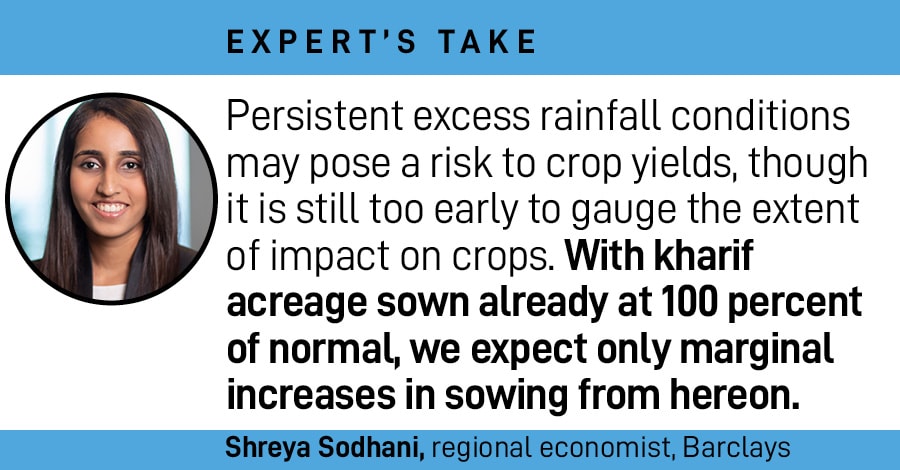
Rain Watch for Sept 5-11: Crop yields at risk due to heavy showers
Monsoon rainfall in Rajasthan, Gujarat and Tamil Nadu has been in excess in a range of 45-82 percent above normal, leading to floods
 People wade through waterlogged roads following heavy rains in Vijayawada, in the southern state of Andhra Pradesh, India, September 4, 2024. Image: REUTERS/Stringer
People wade through waterlogged roads following heavy rains in Vijayawada, in the southern state of Andhra Pradesh, India, September 4, 2024. Image: REUTERS/Stringer
Excessive rains continued in few select regions while water reservoirs are filling up. However, with kharif sowing nearly complete, excess rainfall may pose a risk to crop yields, and potentially impact food inflation.
On a cumulative basis, rainfall was 7.3 percent above the long period average (LPA) as of 8 September, based on Indian Meteorological Department (IMD) data analysis by Barclays. The monsoon surplus persisted over the past week, though rainfall was concentrated in a few states in the north/west (Rajasthan, Gujarat) and the south (Tamil Nadu).
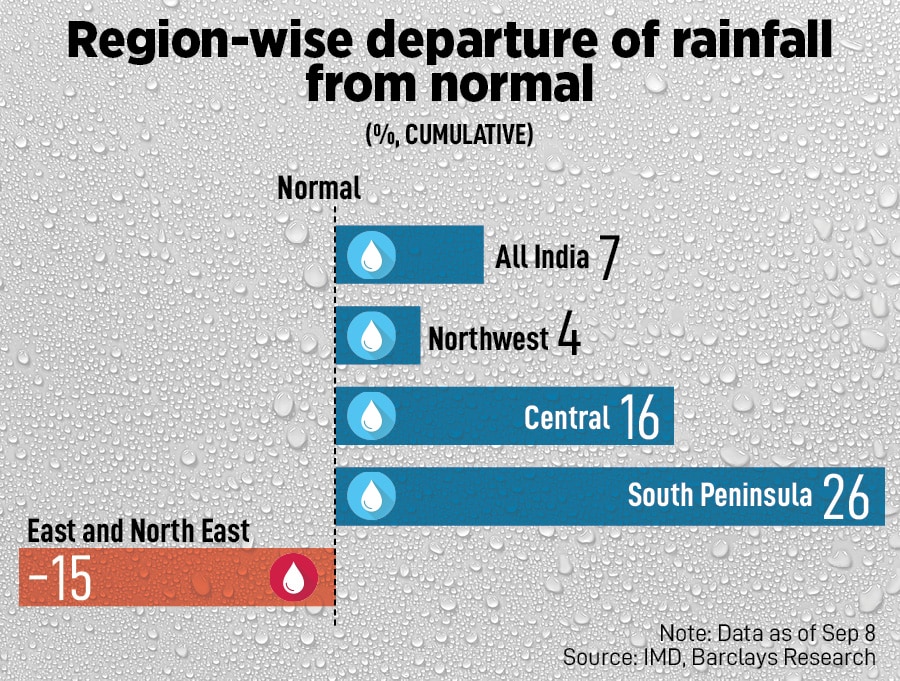
From July, rainfall in the three states (Rajasthan, Gujarat and Tamil Nadu) has been in excess in a range of 45-82 percent above normal, leading to floods. Monsoon rainfall in other states has been either deficient or normal in September. Overall, the distribution of rainfall has changed slightly, with the number of subdivisions seeing excess rainfall increasing to 12 in the past week (from nine at end-August), while the number of subdivisions receiving normal rainfall decreasing to 17 (from 19).
Also read: Rain Watch for Aug 29-Sept 4: La Niña likely in final lap of monsoon season
